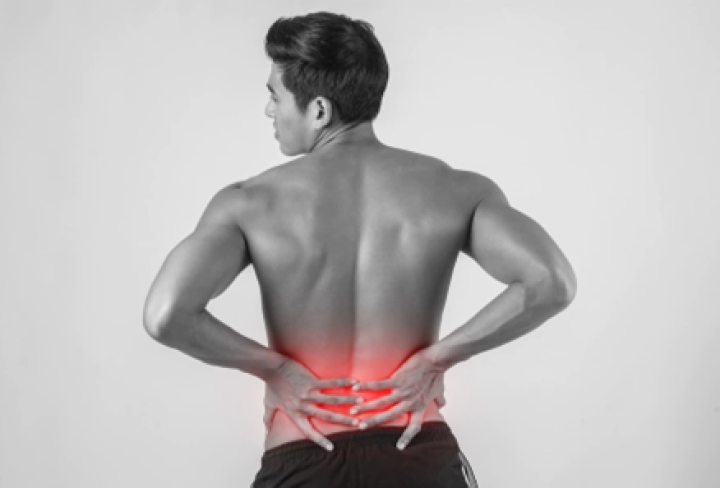Lower back pain refers to discomfort or pain in the area of the lower part of the back, usually between the rib cage and the buttocks. It is a common condition that affects many people at some point in their lives, and it can range from mild to severe. It gets better on its own; however, your doctor would suggest several effective treatments if it does not.
Here are two types of lower back pain:
- Acute lower back pain lasts for a few days to a few weeks. It subsides within a few days.
- Chronic lower back pain lasts for 12 weeks or more
Symptoms of lower back pain include:
Symptoms of lower back pain can occur suddenly or flare up gradually; check below:
- Sharp or dull pain that radiates to the lower back
- Worsened pain while lifting weights or bending
- Back stiffness
- Postural problems
- Muscle spasms (sudden contractions)
Risk factors of lower back pain
Risk factors of lower back pain include:
- Age: Around age 30 or 40
- Lack of exercise
- Excess weight
- Diseases: Some types of arthritis and cancer
- Improper lifting
- Psychological conditions (stress and anxiety)
- Smoking
Lower back pain causes
Many injuries, conditions, and diseases can lead to lower back pain. Back pain reasons include:
- Strains and sprains
- Fractures
- Disk problems (small spine bones, degenerative disc disease, bulging disk or herniated or slipped disk)
- Structural issues (curvature defect in spine, narrow spinal cord)
- Diseases (osteoporosis, spondylosis, arthritis, spine tumours)
Diagnose a lower back pain
The diagnosis depends on the complaints you have; your doctor will order the below tests or examinations:
- Spine X-ray: Uses radiation to produce bone images
- MRI: Uses a magnet and radioactive waves to produce pictures of bones, muscles, tendons, and other soft tissues
- CT scan: Uses X-rays and computer to produce 3D images of bones and soft tissues
- Electromyography (EMG): Tests nerves and muscles and check for nerve damage, which can cause tingling or numbness in the legs.
Depending on the underlying cause of pain, your doctor may order blood or urine tests. Blood tests help to detect genetic markers for some conditions that cause back pain (such as ankylosing spondylitis).
Urine tests to check for kidney stones, which cause pain in the flank (the sides of the low back).
Lower back pain treatment
Lower back pain often improves with rest, ice compression, and over the counter (OTC) painkillers. After some rest, you can start returning to your routine. Staying active elevates the blood flow to the area and helps in faster healing.
Other treatment options to relieve lower back pain depend on the underlying cause. They include:
- Medications: Your doctor may recommend nonsteroidal anti-inflammatory drugs (NSAIDs) or prescription drugs to relieve pain. Other remedies include muscle relaxants and antispasmodics (relieves contractions and tightness)
- Physiotherapy: It helps strengthen the muscles that support your spine. Also, it improves flexibility and enables you to avoid another injury.
- Injections: Steroid injections relieve pain and inflammation
- Surgery: Some injuries need surgical repair. Several types of surgery options for low back pain include many minimally invasive techniques. Your doctor will suggest you the one that best suits you.
Prevention of lower back pain
You cannot entirely prevent lower back pain, but you can reduce the risk of its occurrence; the below tips help you reduce the risk of lower back pain:
- Maintaining a healthy weight.
- Lower back pain exercises: Strengthening your abdominal muscles by performing exercises like Pilates (mind-body exercise) and other exercises to strengthen core muscles that support the spine.
- Lift the right way: Lift with your legs (not your back) to avoid injuries. Hold heavy objects close to your body. Avoid twisting your torso while you are lifting.
When should I see my doctor about lower back pain?
Lower back pain often gets better with rest and pain relievers. Back pain that does not go away may signify a more serious underlying cause.
See your doctor if you notice or experience:
- Pain that lasts about a week, even after self-care
- Tingling sensation, numbness, weakness, or pain in your buttocks or legs
- Unbearable pain or muscle spasms that disturb your regular activities
- Fever, sudden weight loss, bowel or bladder problems, or other unexplained symptoms
Consult your doctor understand more about your condition and get a tailored treatment plan that suits your needs


